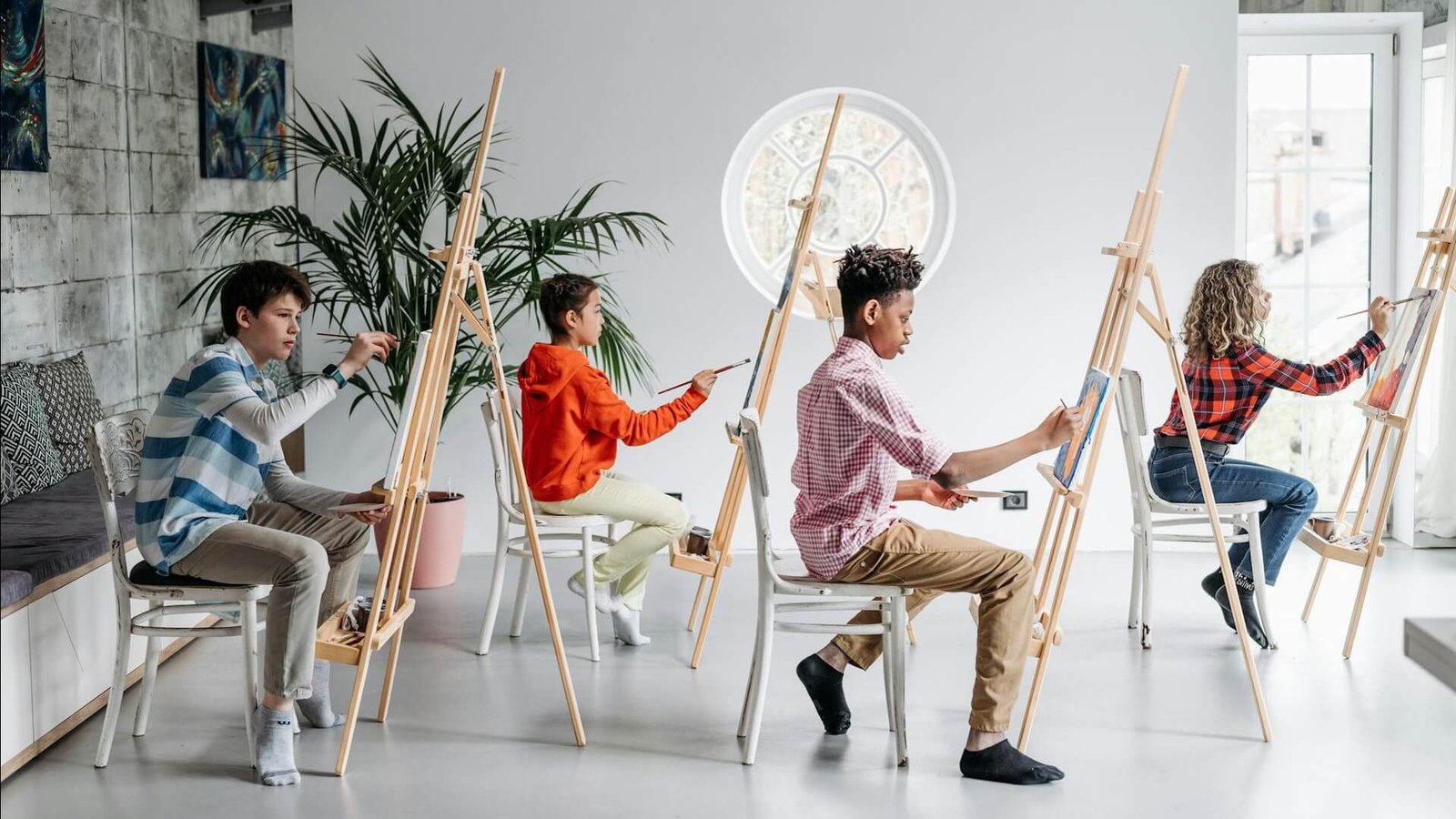
Art Education for Social Change: Empowering Communities Through Creative Expression
Introduction
Art education has long been recognized not only for its intrinsic value in fostering creativity and self-expression but also for its profound impact as a catalyst for social change.
Across history and cultures, art has served as a powerful medium through which individuals and communities have challenged norms, sparked movements, and advocated for social justice. From Renaissance paintings depicting societal upheavals to contemporary street art addressing political issues, the transformative power of art in shaping societal narratives is undeniable.
Before we begin exploring the transformative power of art education for social change, let’s dive into these questions to reinforce our understanding of how art serves as a catalyst for societal transformation.
Question 1
Question 2
Question 3
Question 4
Question 5
Consider the following facts that underscore the role of art education in driving social change:
1. Historical Significance
Throughout history, art has played a pivotal role in challenging prevailing ideologies and advocating for social reform. The French Revolution saw artists such as Jacques-Louis David using their works to depict revolutionary ideals of liberty, equality, and fraternity, galvanizing public sentiment and shaping political discourse.
Similarly, the Civil Rights Movement in the United States was accompanied by powerful visual art and music that amplified the voices of activists and communicated the struggle for racial equality to a global audience.
2. Psychological Impact
Art has a unique ability to evoke emotions, foster empathy, and provoke critical reflection on societal issues. Studies have shown that engaging with art activates areas of the brain associated with empathy and perspective-taking, enhancing individuals’ capacity to understand diverse viewpoints and empathize with marginalized communities.
This psychological impact makes art education a potent tool for cultivating social consciousness and promoting inclusivity.
3. Community Empowerment
In communities around the world, participatory art projects have empowered individuals to address local issues and advocate for change collectively. For instance, mural painting initiatives in urban neighborhoods have not only beautified public spaces but also served as platforms for community dialogue on topics ranging from environmental sustainability to racial justice.
By involving community members in the artistic process, these projects foster a sense of ownership and solidarity, mobilizing collective action for positive social outcomes.
4. Educational Reform
Within educational settings, art education is increasingly recognized for its role in nurturing critical thinking, creativity, and cultural literacy among students. Integrating themes of social justice and human rights into art curriculum empowers young learners to explore complex societal issues through creative expression.
By engaging in art-making activities that address topics such as identity, discrimination, and environmental stewardship, students develop empathy and a sense of agency in contributing to a more just and equitable society.
5. Global Impact of Contemporary Art Movements
In the digital age, art has transcended physical boundaries to become a global phenomenon driving conversations on social change.
Online platforms and social media have amplified the reach and impact of contemporary art movements addressing issues such as climate change, LGBTQ+ rights, and economic inequality. Artists and activists harness digital tools to disseminate their messages widely, mobilize support, and challenge systemic injustices on a global scale.
6. Intersectionality and Diversity
Art education for social change embraces intersectionality by acknowledging the interconnected nature of social identities and systems of oppression. Artists and educators incorporate diverse perspectives, experiences, and voices into their work, challenging stereotypes and amplifying marginalized narratives.
By exploring issues of race, gender, class, and sexuality through art, individuals engage in dialogue that promotes understanding, solidarity, and collective action towards social justice.
7. Healing and Resilience
Beyond advocacy and activism, art serves as a means of healing and resilience in communities affected by trauma and adversity. Art therapy programs, for example, provide therapeutic interventions that help individuals process emotions, express their experiences, and rebuild resilience in the face of challenges such as violence, displacement, or illness.
Through creative expression, participants regain a sense of agency and empowerment, fostering emotional well-being and community cohesion.
8. Environmental and Cultural Sustainability
Art education contributes to environmental and cultural sustainability by raising awareness of ecological challenges and promoting sustainable practices. Environmental art projects engage communities in dialogue about conservation, climate change, and the interconnectedness of human and natural systems.
By integrating principles of sustainability into artistic practices, individuals explore innovative solutions and advocate for policies that protect biodiversity and promote environmental justice.
9. Political Advocacy and Civic Engagement
Artists and art educators play a crucial role in promoting political advocacy and civic engagement through creative activism. Art installations, performances, and exhibitions serve as platforms for addressing pressing social and political issues, mobilizing public discourse, and influencing policy decisions.
By engaging audiences in thought-provoking dialogue and action-oriented initiatives, artists empower communities to participate actively in democratic processes and advocate for policy changes that advance social justice and human rights.
10. Continued Evolution and Innovation
Looking ahead, the field of art education for social change continues to evolve with advancements in technology, interdisciplinary collaborations, and global connectivity. Emerging trends such as virtual reality art, interactive installations, and community-based art residencies offer new avenues for engaging diverse audiences and amplifying voices traditionally marginalized in mainstream narratives.
By embracing innovation and inclusivity, art educators and practitioners harness the transformative power of art to address emerging social challenges and envision a more equitable and sustainable future.
Conclusion
Art education for social change stands at the intersection of creativity, activism, and community empowerment, offering profound opportunities for individuals and societies to envision, advocate for, and create a more just and inclusive world.
By harnessing the transformative potential of art, educators, artists, and activists inspire empathy, foster critical consciousness, and mobilize collective action towards addressing systemic inequalities and promoting human dignity.
As we continue to explore and expand the role of art in fostering social change, we affirm its enduring impact as a catalyst for empathy, resilience, and positive societal transformation.



